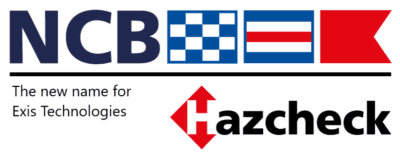Initiatives to improve safety of dangerous goods shipping in the supply chain
Overcoming complexity in shipping dangerous goods
Most significant ship fires are attributed to incorrectly declared dangerous goods (DG) cargoes, often exacerbated by criminal non-declaration or fraud. Around 10% of containerized shipments include dangerous goods, with some ships carrying more than 1000 DG containers on any given voyage. Shipping lines are therefore keen to ensure that DGs are properly classified, packaged, packed and declared throughout the supply chain.
If the cargo is properly declared as dangerous goods, shipping lines can use tools such as Exis Technologies’ Hazcheck to verify that the declared cargo complies with the IMDG Code and other local rules and restrictions. More than 400,000 validations are made with Hazcheck per month for the top 10 lines representing 70% of the world’s DG container traffic. Around 4,000 rejections are picked up each month with the software for declared dangerous goods. With developments that Exis is carrying out to Hazcheck, 82% of validations will be semi-automated before the end of 2019. www.hazcheck.com
For a major carrier with an extensive global network there can be more than 7,500 DG/hazmat restrictions or prohibitions to maintain. Approximately 4,000 of those being port or terminal related. Each operator needs to keep these port/terminal databases updated. Exis Hazcheck customers already have databases with a total of nearly 14,000 port/terminal restrictions and prohibitions. We estimate that the industry in total is maintaining an excess of 50,000 port and terminals restrictions, the majority of which are common. The work is duplicated across carriers, open to interpretation and prone to error on entry.
A key element of streamlining is now being offered through the development of a portal integrating port restrictions. This portal is designed to simplify the end-to-end management of DG booking processes, taking account also of carrier, ship and partner line restrictions. Supported by the two insurance mutuals and developed with the in-house IT expertise of Exis Technologies, the Hazcheck Restrictions Portal is now moving into a new implementation phase. This concentrates on urging container lines, ports and terminals to upload their DG handling policies and restrictions into the portal free of charge, allowing use by shippers, forwarders and others involved in the movement of such goods. By adopting Hazcheck Restrictions the number of restrictions or prohibitions to be maintained can be reduced from 50,000 to 4,000 (8%).
Detecting problems with dangerous goods cargo before shipment
A final option is to physically inspect selected bookings and containers before they are loaded to verify that cargo is declared, packed and stowed correctly. In 2017 more than 70,000 containers have been inspected by the reporting Competent Authorities per year, with ‘deficiencies found in about 10% of cases on average” (source TT Club with four countries reported). The National Cargo Bureau recorded a 9% failure rate out of around 31,000 inspections carried out on behalf of clients. Most of these inspections are of declared DG. Reasons for rejection include leaks, documentation, segregation, placarding/marking (the most common problem followed by packing/stowage issues). With more than 6 million DG containers shipped per year (broad estimate), a failure rate of 9% is significant. There is a minimum of 500,000 potential rejections circulating for declared DG, not to mention non-DG and CTU Code issues leading to leaks.
Container inspection pilot started
Exis Technologies have been working with the National Cargo Bureau (USA) to develop a new container-cargo inspection system in line with customer requirements. Earlier this year Exis announced the launch of Hazcheck Inspections, a web-based database and access portal for inspection companies to plan and enter details of cargo inspections completed on behalf of container or vessel operators. There are currently in excess of 60,000 data records and the number is growing.
Maersk Line recently implemented a Physical Container Inspection Pilot within North America. They are currently performing inspections for import and export cargo into the ports of Newark Berth 88, Houston Bayport, Miami Pomtoc and New Orleans Ceres terminals. The checks will be undertaken by the National Cargo Bureau and initially paid for by Maersk, and the containers will be selected at random.
“We will endeavour to have the inspections completed as quickly as possible to reduce the delay in the intended transport of the container, however if a container is discovered to be inadequately stuffed, lashed, and secured, or found to contain mismatching cargo compared to the given declaration, it may be necessary to take corrective actions for onward transportation. Such corrective actions may involve reworking the container to ensure it is compliant with given regulations”.
Maersk explained that the aim of the exercise is to collect data to develop “procedures that better ensure the accuracy of cargo descriptions provided to Maersk”, as well as improve the use of the IMO’s Code of Practice for Packing of Cargo Transport Units (CTU Code), which is a guide for loading cargo in containers, but not yet mandatory.







